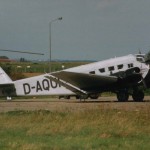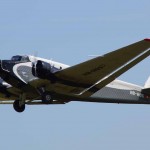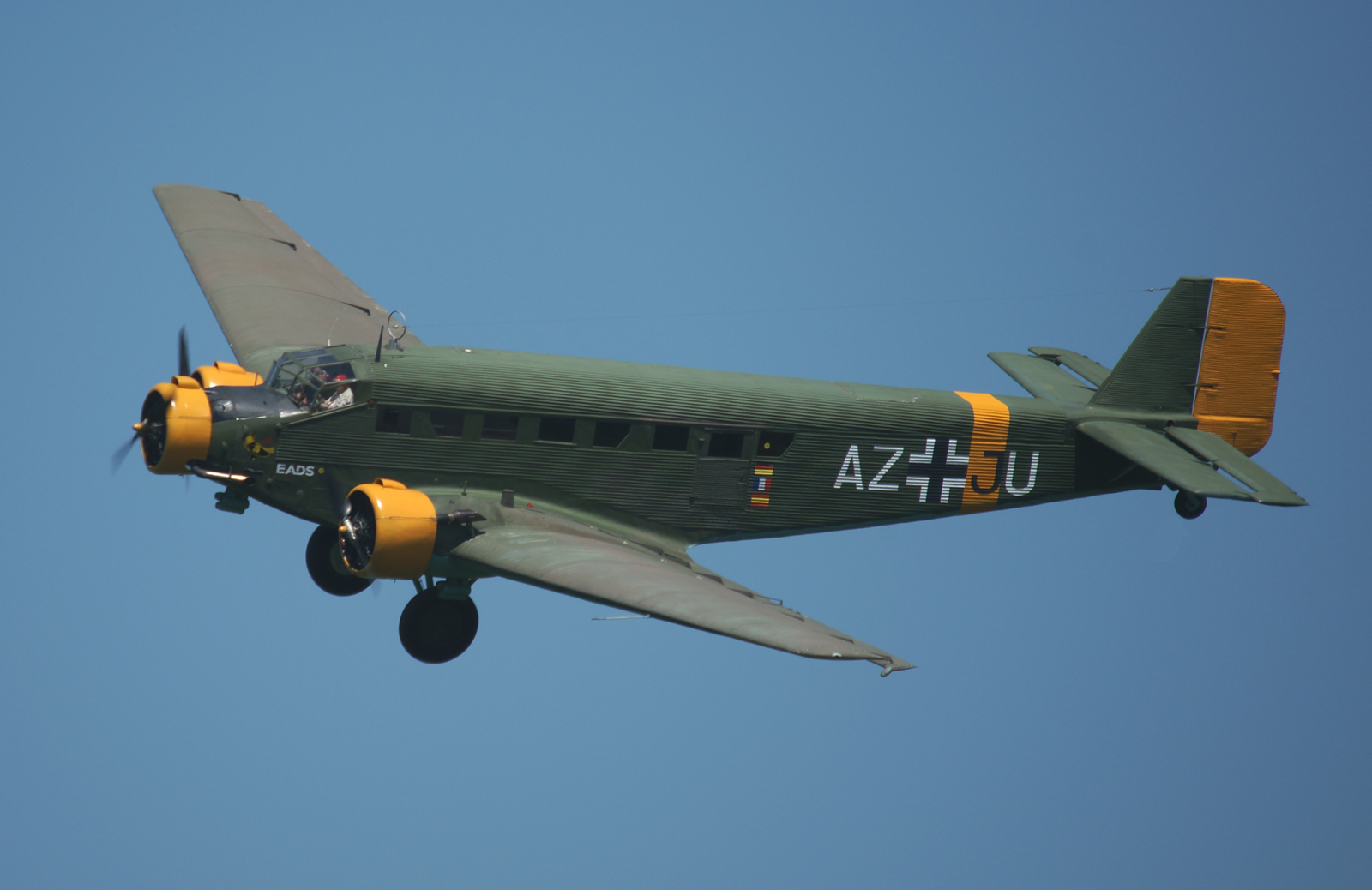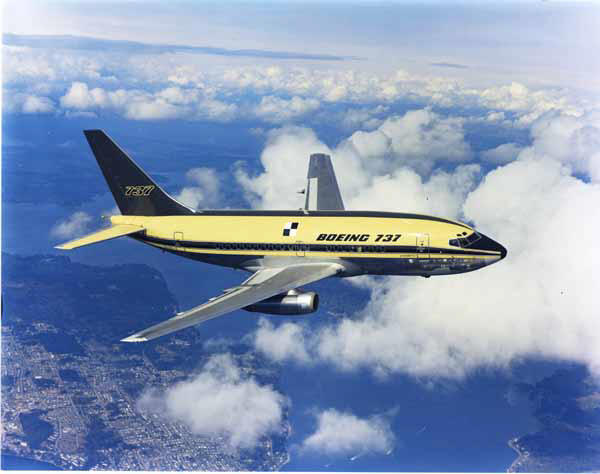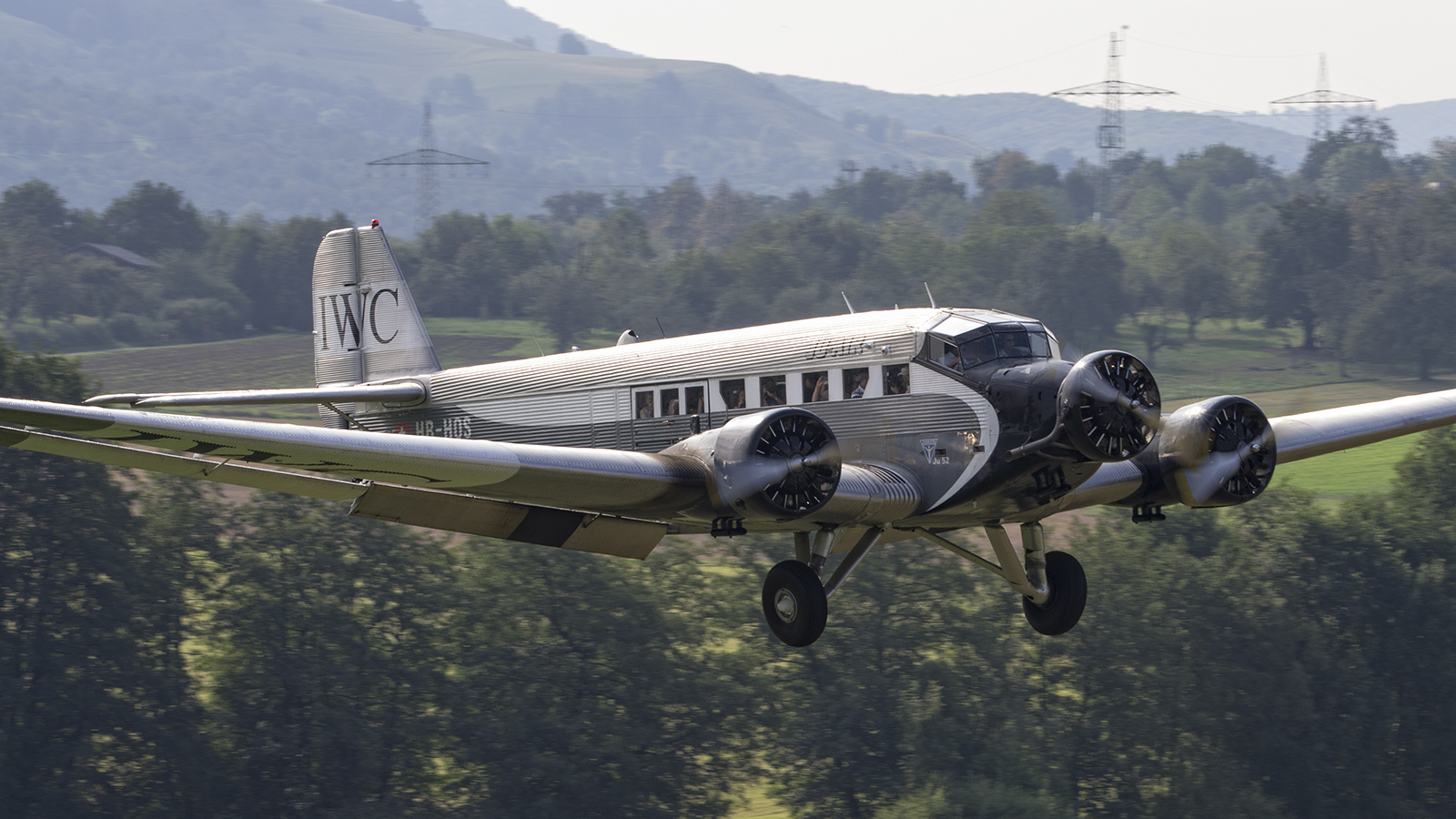
The Junkers Ju 52 was a German trimotor transport aircraft. It saw both civilian and military service during the 1930s and 1940s. The Junkers Ju 52 was nicknamed “Tante Ju” (Auntie Ju) and “Iron Annie” by Axis and Allied troops. The prototype was designed as a single-engine aircraft. But airlines such as Lufthansa, for the safety of their passengers, preferred a three-engine variant, which in addition to robustness and short take-off and landing distances, offered minimum maintenance and low costs.
Developing nation: Germany.
Manufacturer/designer: Junkers/Ernst Zindel.
Production Lines: Junkers works at Dessau.
Type aircraft: trimotor transport aircraft.
First flight: 13 October 1930 (Ju 52/1m); 7 March 1932 (Ju 52/3m).
First delivery: 1931.
Produced: 4,845
The Junkers JU 52 was designed by the legendary Hugo Junkers and first appeared in May 1932. Within six years, the model was flying 75 percent of all German air passenger flights.
The Ju-52 was built of corrugated metal skin and paid little attention to beauty, features of a typical Junkers design. Parts and pieces stuck out of the airframe, and the corrugated skin, though much stronger than fabric and metal tubes, created stronger air resistance. In April 1931, the originally single-engined Ju-52 prototype was fitted with three engines. Performance improved tremendously and production of the new model immediately began. The Ju-52 served as an airliner for many nations. Finland, Spain, Sweden and Germany were just a few.
So succesful was the JU-52 that licence built versions were still being used as a civil and military carrier right up to the 1980s.
Civilian operators
- Belgium – Sabena
- Bolivia – Lloyd Aéreo Boliviano
- Brazil – Aeronorte Cruzeiro do Sul Syndicato Condor – Serviços Aéreos Condor, VASP and VARIG
- Canada – Canadian Airways Limited, Canadian Pacific Airlines
- China – Eurasia
- Colombia – SCADTA
- Czechoslovakia – CSA ceské aerolinie, Government of Czechoslovakia (Postwar)
- Denmark – Det Danske Luftfartsselskab
- Estonia – AGO
- Finland – Aero Oy DLL
- France – Aero Cargo, Air France, Air Ocean, CTA Languedoc Roussillon Société Auxiliare de Navigation Aérienne Socotra
- Nazi Germany – Deruluft, Deutsche Lufthansa
- Germany – Deutsche Luft Hansa, Lufthansa
- Hungary – Malert Airlines
- Italy – Ala Littoria
- Mozambique – Direccao de Exploracao dos Transportes Aéreos
- New Guinea – Gibbes Sepik Airways, Mandated Airlines
- Norway – Det Norske Luftfartselskap
- Poland – LOT Polish Airlines
- Portugal – Aero Portuguesa
- South Africa – South African Airways.
- Soviet Union – Aeroflot
- Spain – Spanish State, Iberia Airlines
- Switzerland – Ju-Air , Swissair
- United Kingdom -British Airways Limited, British European Airways, British Overseas Airways Corporation
- Uruguay – Companía Aeronáutica Uruguaya S.A. (CAUSA)
- Yugoslavia – JAT
General characteristics
•Crew: 3 (two pilots, radio operator)
•Capacity: 18 troops or 12 litter patients
•Length: 18.90 m (62 ft 0 in)
•Wingspan: 29.25 m (95 ft 10 in)
•Height: 4.5 m (14 ft 10 in)
•Wing area: 110.5 m² (1,190 ft²)
•Empty weight: 6,510 kg (14,325 lb)
•Loaded weight: 9,200 kg (20,270 lb)
•Max. takeoff weight: 10,990 kg (24,200 lb)
•Powerplant: 3 × BMW 132T radial engines, 533 kW (715 hp) each
Performance
•Maximum speed: 265 km/h (165 mph) at sea level
• Cruise speed: 211 km/h (132 mph)
•Range: 870 km (540 mi)
•Service ceiling: 5,490 m (18,000 ft)
•Rate of climb: 17 minutes to 3,050 m (10,000 ft)
All pictures courtesy of Zijde Aviation Photo and Publishing, Rob Vogelaar and Marcel van Leeuwen








